Table Of Contents
Downsizing after decades in the same home is more than just a move, it's a life transition. Whether you're planning your own relocation or helping a loved one navigate this change, the process can feel overwhelming. We understand that every box holds memories, every room tells a story, and every decision carries emotional weight.
This comprehensive senior moving checklist NYC guide is designed to bring structure, clarity, and calm to what can be an emotionally challenging time. Moving in New York City presents unique challenges, from navigating narrow stairwells to coordinating building elevators, but with the right approach and support, your transition can be smooth and stress-free.
How to Use This Senior Moving Checklist
This checklist is organized by timeline, starting six weeks before your move and continuing through moving day. Each phase builds upon the previous one, ensuring nothing is overlooked while respecting the emotional pace that senior moves require.
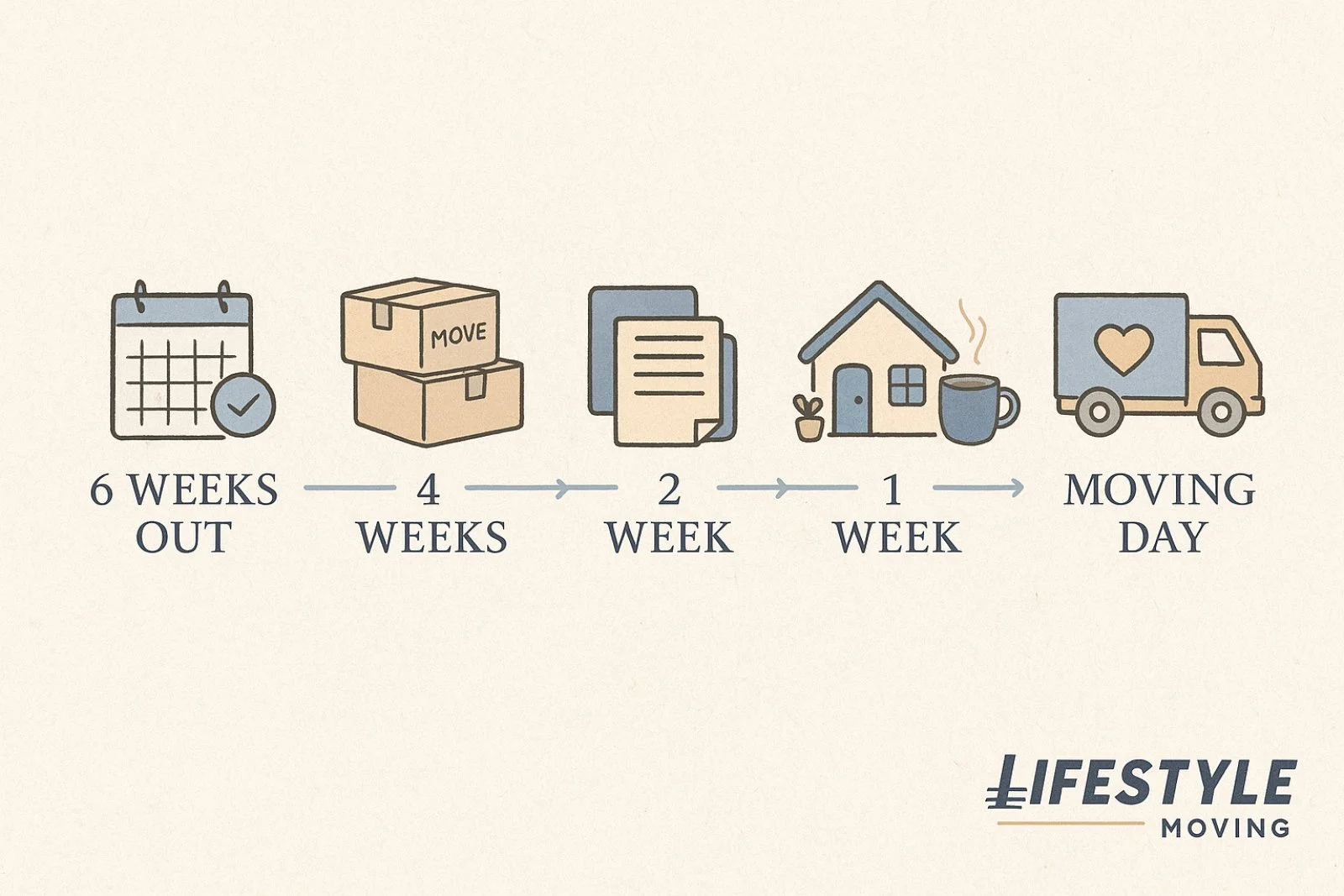
Remember, this is a guide, not a rigid rulebook. Every move is unique, and every family situation is different. Some steps may not apply to your specific circumstances, while others might need more time or attention. The key is to start early, stay organized, and be patient with yourself or your loved one throughout the process.
For families coordinating from a distance or managing multiple responsibilities, consider printing this checklist and sharing it with all involved parties. Clear communication and shared expectations will make the entire process smoother for everyone.
6 Weeks Before the Move - Start Emotionally, Not Just Logistically
The most successful NYC downsizing for seniors begins with emotional preparation rather than rushing into logistics. This phase is about creating a supportive environment for decision-making and establishing the foundation for everything that follows.
Begin by setting aside time for slow, thoughtful sorting of belongings. Unlike typical moves where speed is prioritized, NYC downsizing for seniors requires a gentler approach. Schedule dedicated "sorting sessions" of just one to two hours at a time, focusing on one room or even one closet. This prevents overwhelm and allows time for the emotional processing that naturally accompanies letting go of possessions.
.webp)
Involve family members early in this process, but be mindful of the dynamics. Adult children often want to help but may inadvertently rush decisions or dismiss the emotional significance of items. Create a system where the senior has the final say on personal belongings, while family members can offer practical support and suggestions.
Now is the time to schedule a consultation with moving help for elderly NYC services. Look for companies that specialize in senior relocations and understand the unique needs of older adults. During this consultation, discuss any mobility concerns, valuable items that need special handling, and the emotional support the senior might need during the move.
Helpful tip: Use colored stickers to create a simple sorting system. Green for "definitely keeping," red for "giving away," yellow for "needs discussion," and blue for "unsure." This visual system makes decisions easier and helps family members understand the senior's preferences at a glance.
4 Weeks Before - Book Movers & Begin Downsizing
With emotional groundwork laid, it's time to tackle the practical elements of your move. This phase focuses on securing services and beginning the physical sorting process that will make moving day efficient and stress-free.
Contact your new building's management office to reserve elevators and confirm any moving restrictions. Many NYC buildings have specific hours for moves, requirements for protective coverings, and fees that need to be paid in advance. Understanding these requirements now prevents last-minute complications.
Book your NYC senior movers at least four weeks in advance, especially if you're moving during peak seasons (summer months and end-of-month periods). When interviewing moving companies, ask specifically about their experience with elderly moving assistance NYC. The right movers will understand the importance of patience, clear communication, and gentle handling of both belongings and emotions.
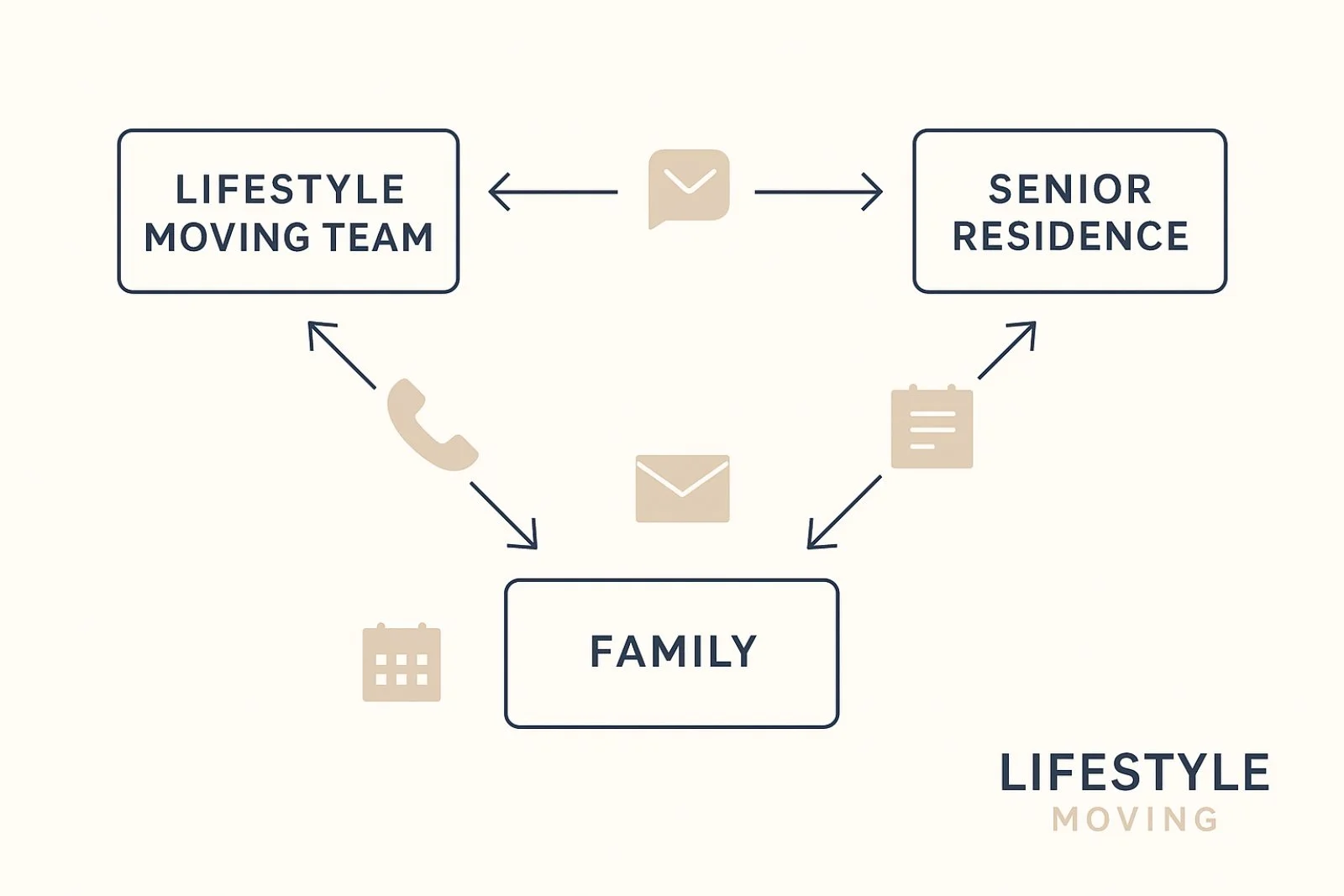
Begin packing non-essential items that you've already decided to keep. Focus on books, linens, seasonal decorations, and other items that won't be needed in the coming weeks. Use this time to pack carefully, with plenty of padding for fragile items. Many seniors have collections of china, glassware, or artwork that require special attention.
Schedule donation pickups for items you've decided to give away. Organizations like Housing Works, Goodwill, and local religious institutions often provide pickup services, which is especially helpful for seniors who may have mobility limitations. For valuable items, consider contacting estate sale companies who can help maximize the value of belongings you're parting with.
Helpful tip: Request smaller boxes from your moving company. While larger boxes are more efficient for movers, smaller boxes are easier for seniors to handle and less likely to become overwhelmingly heavy when packed.
2 Weeks Before - Organize Essentials and Documents
As your moving date approaches, the focus shifts to organizing the essentials you'll need immediately and ensuring important documents are easily accessible throughout the transition.
Pack a personal suitcase as if you're traveling for a week. Include several changes of clothes, all medications with clear labels, phone chargers, toiletries, and any comfort items that help you feel at home. This suitcase should stay with you throughout the move and be the first thing unpacked in your new home.
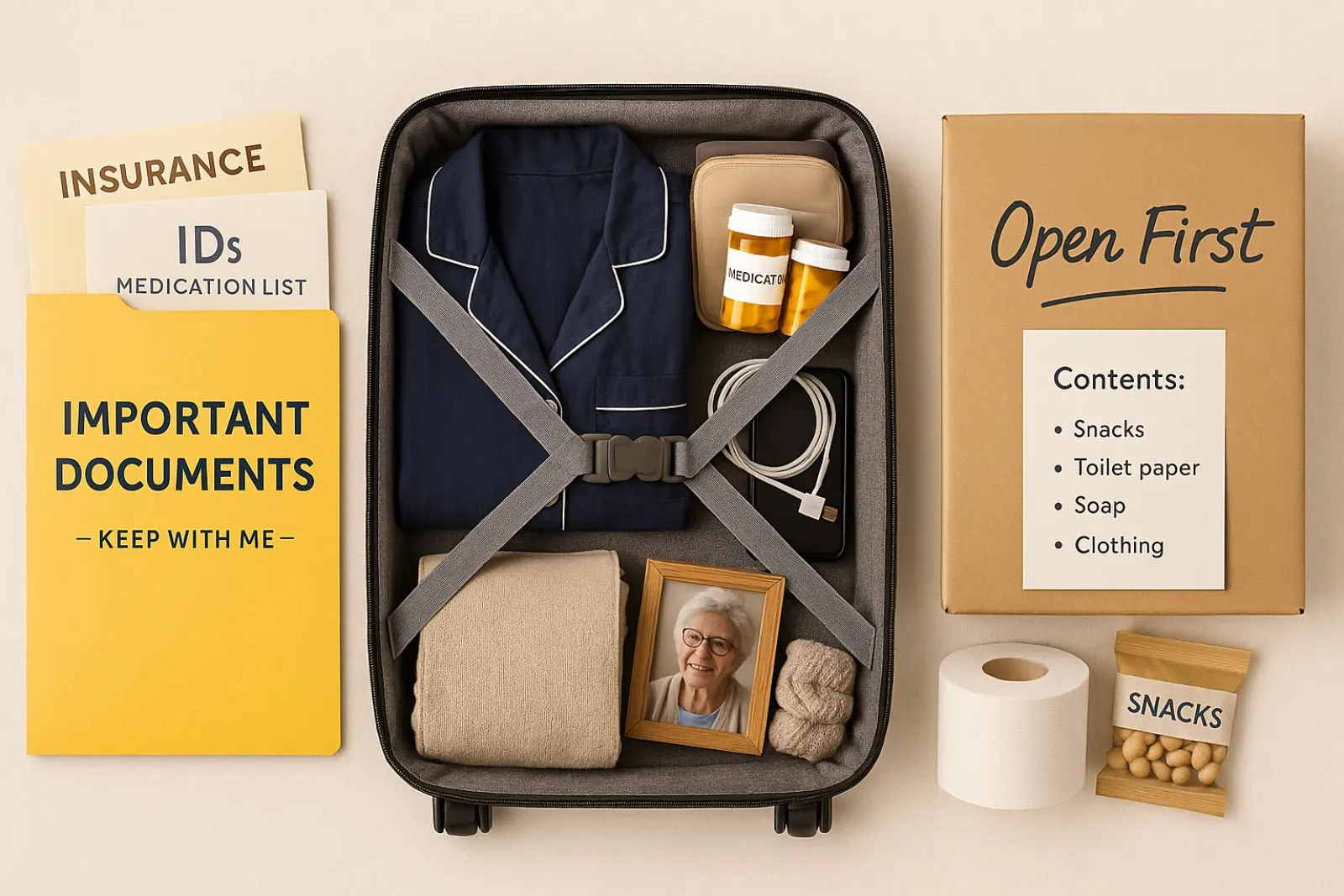
Create a clearly labeled folder marked "Carry With Me" for all important documents. This should include identification, insurance papers, medical records, legal documents like wills and power of attorney, bank information, and emergency contact lists. Keep this folder in your personal possession throughout the move, never pack it with other items.
Prepare an "Open First" box for your new home. This box should contain essentials for your first day and night: basic toiletries, medications, a change of clothes, phone chargers, basic tools, cleaning supplies, toilet paper, and any daily necessities. Label this box clearly and ensure it's loaded last and unloaded first.
Begin the process of updating your address with important services and institutions. Start with the postal service, then move on to banks, credit card companies, insurance providers, doctors' offices, and subscription services. This process can take time, so starting early ensures you don't miss important mail during the transition.
Helpful tip: Create a simple spreadsheet or list tracking which organizations you've contacted about your address change. This prevents duplicate notifications and ensures nothing is overlooked.
1 Week Before - Walk Through, Not Rush Through
The final week before your move is about confirmation, final preparations, and maintaining calm. This is not the time for major decisions or rushing through tasks, it's about ensuring everything is in place for a smooth transition.
Confirm that utilities and services at your new residence are scheduled to be activated. This includes electricity, gas, internet, cable, and phone services. If you're moving into a senior living community, verify what services are included and what needs to be arranged separately.
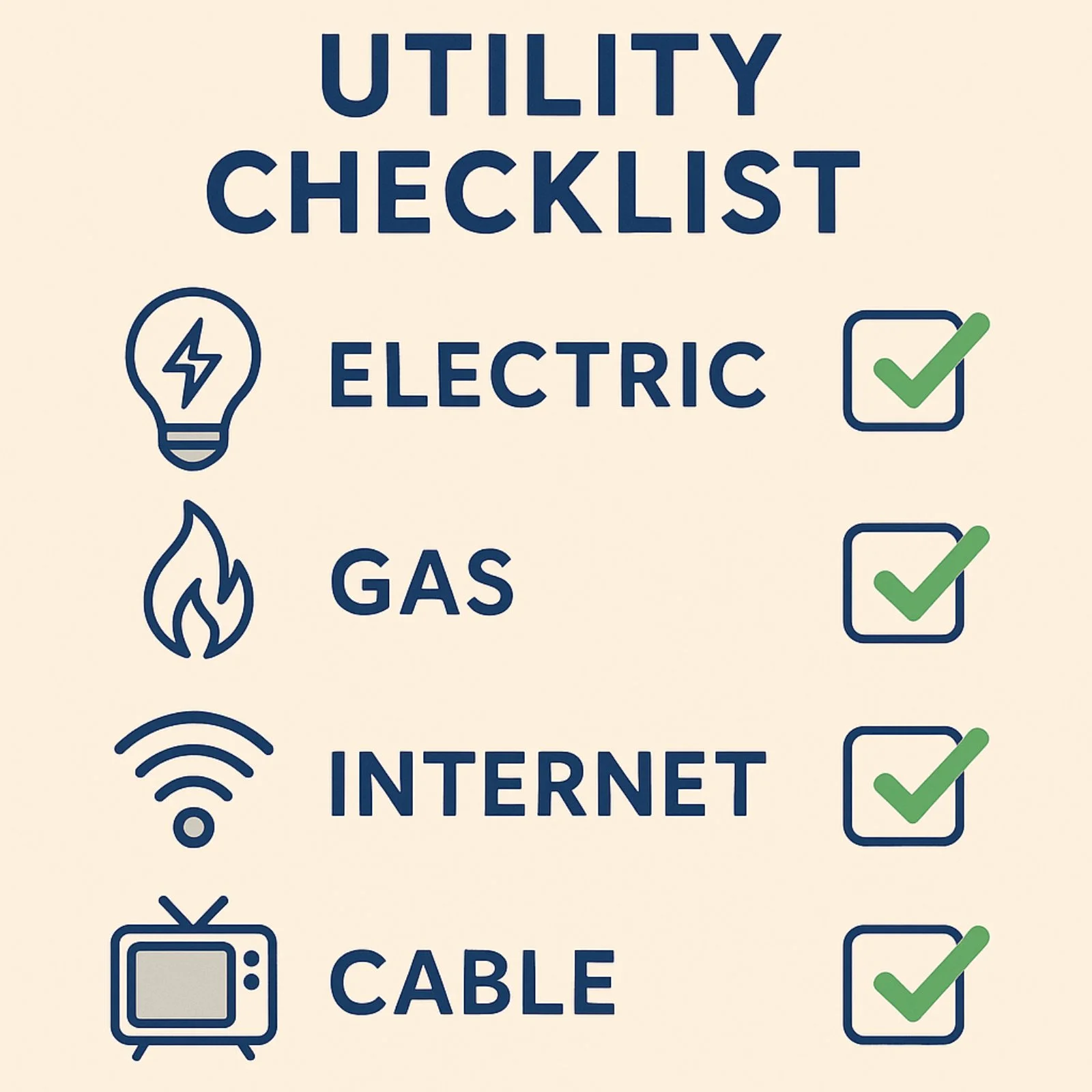
Conduct a careful walk-through of your current home with a family member or friend. Mark items that require special handling by the movers versus items you'll carry personally. Take photos of complex electronic setups (TV, computer, stereo system) to make reassembly easier in your new home.
Confirm your moving day schedule with all parties involved. This includes the moving company, building management at both locations, and any family members who will be helping. Share contact information so everyone can reach each other if needed.
Helpful tip: If the senior has cognitive concerns or tends to become anxious with change, consider keeping one room (like the bedroom) completely untouched until the final day. This provides a familiar space to retreat to if the moving process becomes overwhelming.
1 Day Before - Create Calm
The day before your move should be about creating a calm environment and ensuring everything is ready for the movers. This is not the time for last-minute packing or major decisions.
Walk through your home and ensure clear pathways for the movers. Remove any obstacles, secure loose rugs, and make sure stairways are well-lit and free of clutter. If you have pets, make arrangements for their care during the move, as the activity and open doors can be stressful for animals.
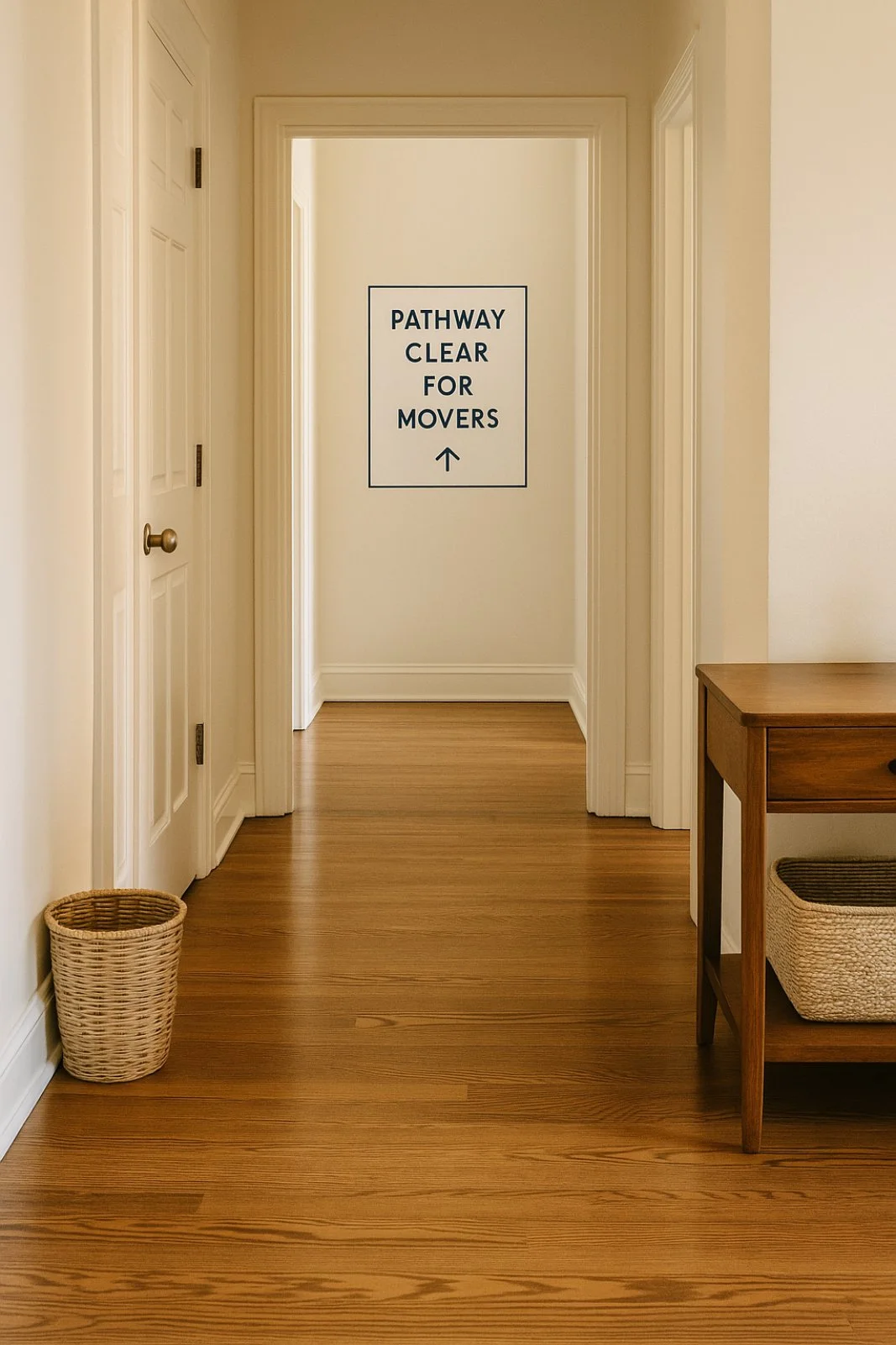
Review the next day's schedule with everyone involved. Confirm arrival times, contact information, and any special instructions for the movers. Prepare snacks and water for both yourself and the moving crew, staying hydrated and maintaining energy is important for everyone involved.
Set aside personal comfort items that will help you feel at ease during the move. This might include favorite tea, a comfortable pillow, or photos that bring you joy. Having these items easily accessible can provide comfort during a stressful day.
Helpful tip: Prepare a simple meal or snacks for your first day in your new home. After a long day of moving, the last thing you'll want to do is figure out dinner in an unfamiliar kitchen.
Moving Day - Gentle Transitions
Moving day for seniors requires a different approach than typical relocations. The focus should be on creating a calm, supportive environment while ensuring the senior feels informed and comfortable throughout the process.
Designate one person as the primary point of contact for the movers. This person should be familiar with the moving plan and able to answer questions about placement of items in the new home. Having a single point of contact reduces confusion and helps the senior avoid feeling overwhelmed by multiple conversations.
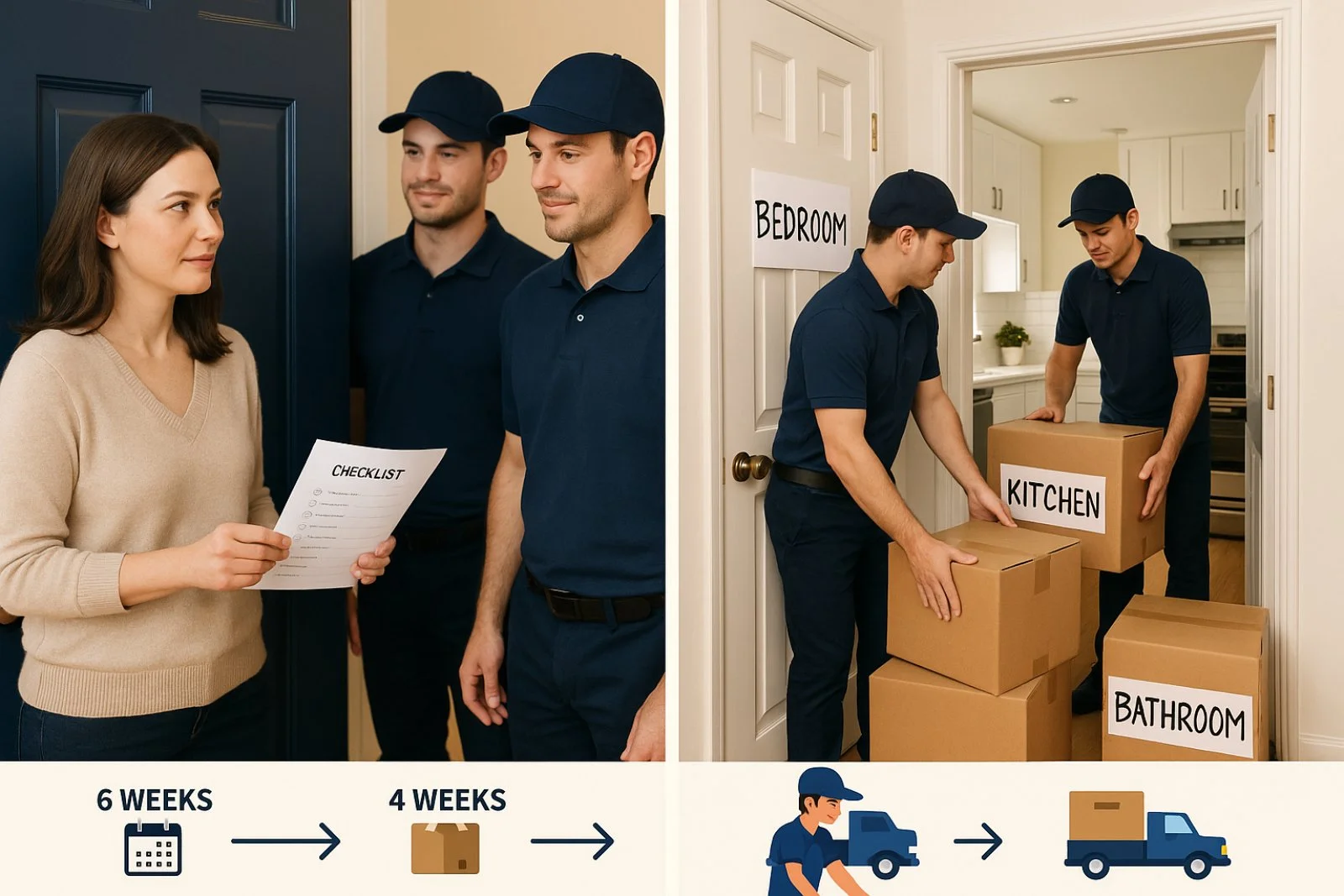
Professional relocation services for seniors will handle all heavy lifting and furniture placement. Your job is to stay comfortable, stay hydrated, and provide guidance about where items should go in your new home. Don't feel pressured to help with physical tasks, that's what you're paying the professionals to handle.
Ensure that boxes and furniture are clearly labeled and placed in the correct rooms in your new home. This is where the time you spent planning and labeling pays off. The clearer your labeling system, the easier it will be to find things later.
Focus on unpacking personal items first. Set up your bedroom, unpack your medications, and establish a comfortable space where you can rest. Having one familiar corner in your new home can provide emotional comfort while you gradually adjust to your new environment.
Helpful tip: Remember that this is a transition, not a race. Professional movers who specialize in senior relocations understand that this process is about more than just moving boxes, it's about respecting the emotional significance of this change and ensuring you feel supported throughout.
How Lifestyle Moving Supports Senior Relocations
At Lifestyle Moving, we understand that senior relocations require a specialized approach that goes beyond standard moving services. Our team is trained to provide the patience, respect, and attention to detail that make these transitions as smooth as possible for both seniors and their families.
Our senior service includes complete furniture disassembly and reassembly, ensuring that your belongings are handled with care and set up exactly as you want them in your new home. We use specialized packing materials and techniques for fragile items, understanding that many seniors have collections of china, artwork, or other valuable items that require extra protection.
We offer optional unpacking and setup services, which can be particularly valuable for seniors who may have mobility limitations or simply want to settle in more quickly. Our team can arrange furniture, hang artwork, and even help organize belongings in your new space according to your preferences.
We also coordinate seamlessly with adult children, caregivers, and residence staff, ensuring that everyone involved in the move has clear communication and shared expectations. Many families find this coordination invaluable, especially when managing care from a distance.
For seniors who are downsizing significantly, we provide storage solutions that can accommodate belongings that don't fit in the new home but aren't ready to be given away. This flexibility allows for a more gradual transition and reduces the pressure to make immediate decisions about cherished possessions.
Most importantly, our team approaches every senior relocation with professionalism and empathy. We're licensed, insured, and experienced with the unique challenges and emotions that accompany these significant life transitions.
Planning a Senior Move in NYC?
Speak with a team that understands the logistics, and the emotions, behind every box. At Lifestyle Moving, we're committed to making your transition as smooth and stress-free as possible.
Schedule your consultation today and discover how our specialized approach to senior relocations can support you and your family through this important life change.
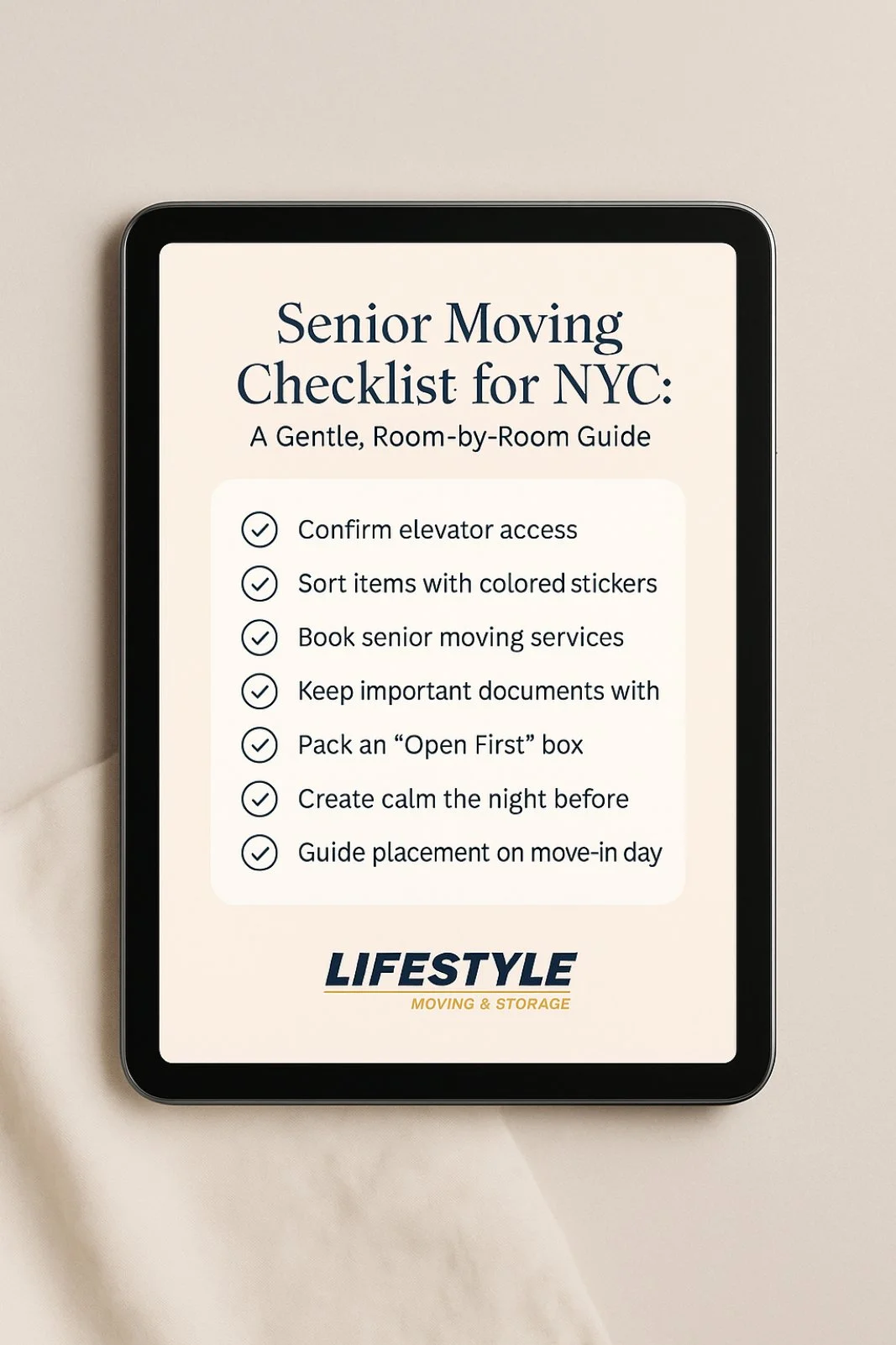




.webp)